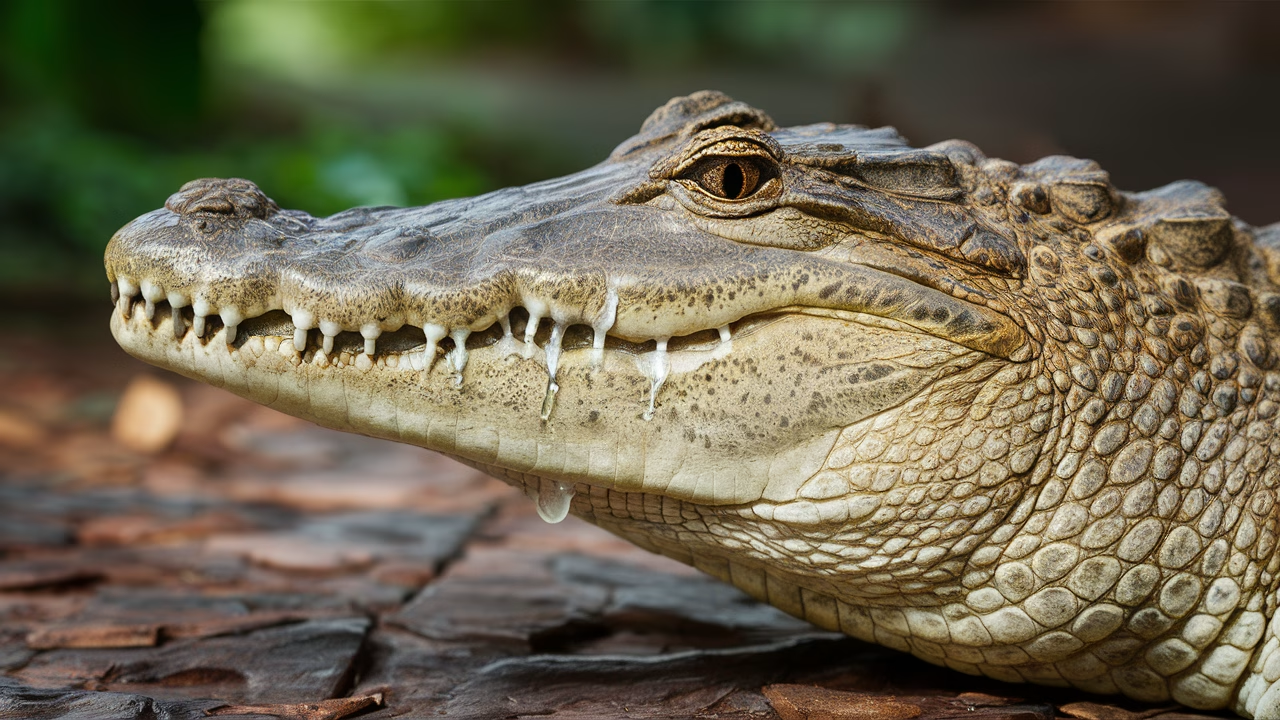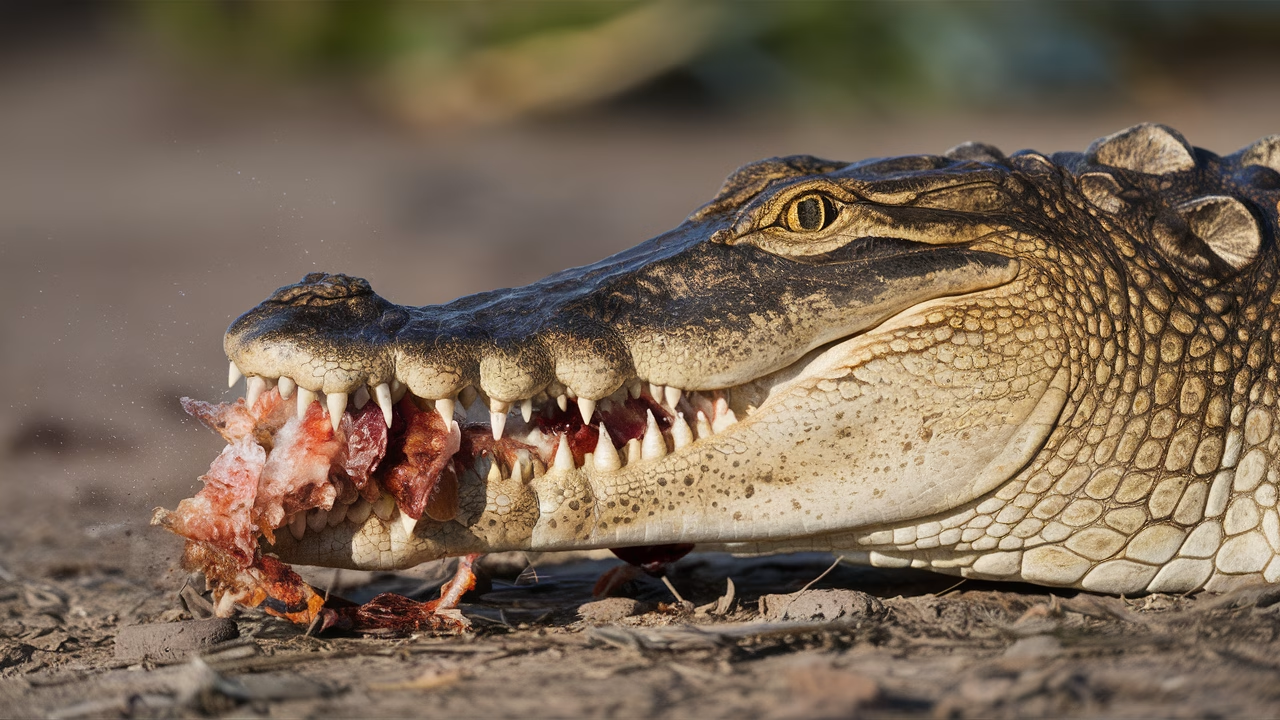Why Do Crocodiles Cry When Eating?
You’ve probably seen it in documentaries—crocodiles tearing up during meals, leading many to wonder: do crocodiles actually cry tears of sadness? The reality is far more fascinating and completely devoid of emotion. Crocodiles cry while eating due to physiological processes, not sorrow. When you observe crocodiles crying, you’re witnessing pressure on their tear glands as they swallow food, especially when consuming prey on land.
TL;DR: The Truth Behind Crocodiles Crying
- No emotional reason: Crocodiles do not cry out of sadness or remorse.
- Physiological cause: The crocodile tears are produced by overactive tear glands, often stimulated during feeding.
- Linked to crocodile behavior eating: As they swallow forcefully or spend prolonged time on land feeding, the crocodile tear glands release moisture.
- Historical myth: The term ‘crocodile tears’ dates back centuries as a metaphor for fake emotions—but real crocodile tears are genuine physiological reactions.
- No purposeful crying: These tears do not serve an emotional/social role like in humans or some mammals.
The Science Behind Crocodile Tears
The Physiology of Crocodile Tear Glands
Let’s demystify where these infamous crocodile tears originate. Crocodile tear glands are located near their eyes—specifically, they’re connected to the Harderian and lacrimal glands. These specialized crocodile tear glands produce tears that help lubricate the eyes and keep them moist, especially when the animal spends extended periods out of water.
During feeding, especially when understanding crocodile behavior while eating on land, their jaws and sinuses experience significant pressure fluctuations. The act of aggressively tearing and chewing through prey, combined with deep contractions during swallowing, activates the tear ducts—resulting in visible tears streaming down their eyes.
Understanding Crocodile Behavior While Eating
Why Do Crocodiles Produce Tears When Eating?
Here’s what you’ll observe in the wild. You’ll see a crocodile dragging its prey ashore, clamping down with brutal force and beginning the ritualistic twisting and jerking known as the “death roll.” As they tear off chunks of meat to swallow, you may notice their glassy eyes seemingly welling up—this crocodiles crying phenomenon is what sparked the age-old myth.
In reality, when you witness why do crocodiles cry when eating, you’re seeing a side-effect of their unique feeding anatomy. Crocodiles have powerful jaw muscles but limited facial expression, so the pressure exerted during feeding directly impacts tear flow through the ducts into the eyes.
Crocodile Behavior Eating Patterns
Crocodiles are ambush predators with fascinating feeding strategies. Once they capture prey, they often reposition it—sometimes even hiding it underwater (food caching) to soften the carcass. When they finally eat, the physical exertion of crocodile behavior eating stimulates tear secretion as a byproduct of intense jaw activity. It has everything to do with biology and nothing to do with emotions.
Facts vs. Myths About Crocodile Tears
Do Crocodiles Cry Tears of Sadness?
The definitive answer: No. When people ask “do crocodiles cry tears of sadness,” we can confidently say crocodiles do not possess the emotional capacity for sadness in the way we define it in humans or certain mammals. Their central nervous systems simply aren’t built for complex emotional expression like grief or guilt. So when you see crocodiles crying, what you’re witnessing is biological function—not emotional response.
The Origin of the Crocodile Crying Myth
So where did the phrase ‘crying crocodile tears’ come from? This metaphor dates back to 14th-century literature, where crocodiles were said to weep over the victims they devoured. It became a cautionary tale about deception—claiming sorrow with false tears. However, modern understanding of why do crocodiles cry when eating has shown that while the tears are real, the remorse is pure fiction.
Do Crocodile Tears Have a Purpose?
Interestingly, crocodile tears do serve important biological functions beyond folklore. Apart from moistening the eyes, they may help eliminate toxins or irritants—a crucial adaptation for animals that spend their lives in muddy, bacteria-filled waters. This practical purpose of crocodile tear glands is incidental to feeding, not an evolved emotional outlet.
Conclusion: Shedding Light on Crocodile ‘Crying’ Phenomenon
The mystery of crocodiles crying represents a perfect convergence of biology, behavior, and human misinterpretation. Understanding crocodile behavior while eating shows us how nature’s processes can be misunderstood when filtered through our human emotional lens. By separating folklore from scientific fact, we gain remarkable insights into crocodile anatomy and feeding ecology.
The next time you see footage of a crocodile with tears while feeding, remember: those aren’t emotional tears. They’re part of an elegant, if misunderstood, physiological response from sophisticated crocodile tear glands. In this biological complexity lies the endless wonder that defines the animal kingdom we’re privileged to study and appreciate.
Frequently Asked Questions
- Do crocodiles really cry when they eat?
Yes, crocodiles do produce tears while eating, though this is a physiological occurrence—not based on emotion. - Do crocodile tears indicate sadness?
No. Unlike humans, crocodiles do not cry tears of sadness. Their tears are linked to gland activity during feeding. - Is ‘crocodile tears’ just a figure of speech?
The term comes from a myth but is grounded in real observable behavior. It refers metaphorically to insincere emotion. - What triggers crocodile tear secretion?
Eating, specifically swallowing and jaw movement, can stimulate tear gland activity and produce visible tears. - Do crocodile tears serve any purpose?
Yes. While not emotional, these tears help protect and lubricate their eyes, especially when out of water. - Do other reptiles produce tears?
Some do, but not all. Crocodilians are among the few reptiles known to visibly produce tears. - Can we study crocodile tears to better understand them?
Absolutely. Many researchers focus on crocodilian anatomy and behavior to understand these physiological quirks more deeply.





